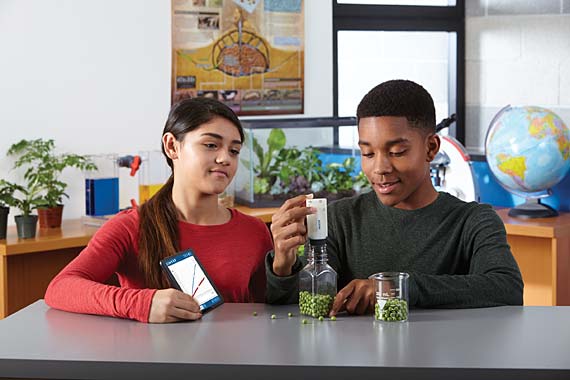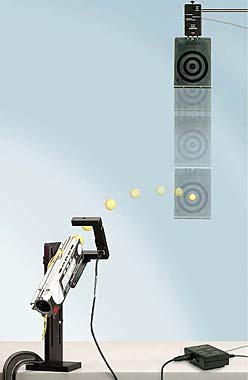Test the Rainbow! Understanding pH
Students often struggle understanding pH. While we can tell them that it is a logarithmic function, students are more likely to associate “logs” with a calculator button or a piece of wood. So how do we get them to understand what the pH scale really means? Look for a lesson, instead of a pot of gold, at the end of a rainbow.
Let’s start with the acids. First have the students pour 10 mL of 0.1 M HCl into a test tube. Using graduated cylinders and pipets they can add 1 mL of that solution to another test tube with 9 mL of water making a 0.1 M solution. They should repeat the process of taking 1 mL of the previous solution and adding 9 mL of water until there are 5 solutions. They won’t know it, but they just performed a serial dilution. Now they can add some universal indictor to the solutions for a splash of colour.
 Indicators are nice, but they really are just an indicator. In this case the indictor was not able to distinguish between the first four test tubes. (Note to self: get some new universal indicator!). Since the true colors aren’t shining through, it’s important to remember that to really understand pH, your students need to take actual pH measurements.
Indicators are nice, but they really are just an indicator. In this case the indictor was not able to distinguish between the first four test tubes. (Note to self: get some new universal indicator!). Since the true colors aren’t shining through, it’s important to remember that to really understand pH, your students need to take actual pH measurements.

Now comes the pHun part! After recording the data for the solutions, it is important for students to try to make some meaning out of those measurements. Time to dust off those concentration calculation skills. They should be able to calculate the concentration, and write the concentration of the acids in scientific notation.

No need to travel somewhere over the rainbow, all your students need now are some good guiding questions and they should see that pH is primarily based on the negative exponent of the concentration of H+. With this understanding, pH=-log[H+] can be something more powerful than just a formula to plug and chug in calculator.
You can even extend this activity to pOH and its relationship to pH if you drop the base. Following the same procedure, students can perform a serial dilution starting with a 0.1 M NaOH solution.

After this colourful and engaging activity with the Wireless pH sensor and some fresh universal indicator, your students will be able to find the rainbow connection: a better understanding of the pH scale, what it means and how it’s measured.



 In this lab we melted wax in a test tube and measured the temperature as it cooled over 30 minutes.
In this lab we melted wax in a test tube and measured the temperature as it cooled over 30 minutes. 









